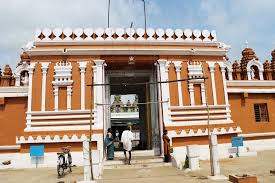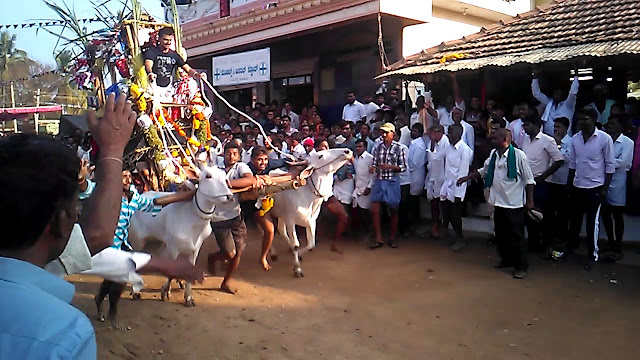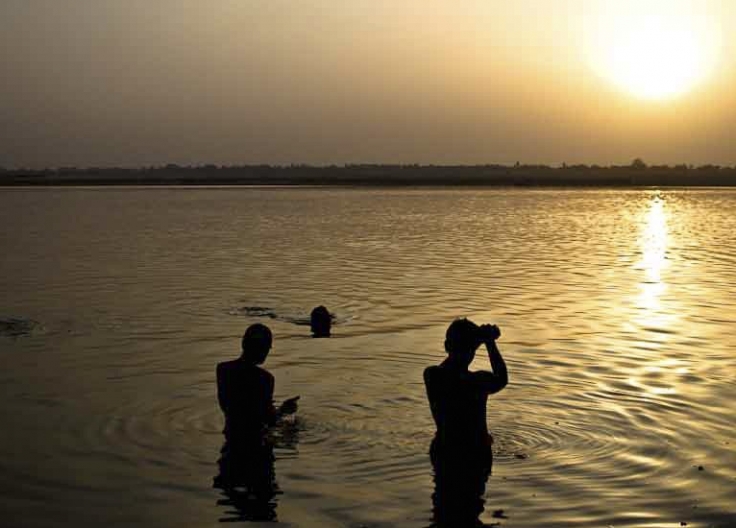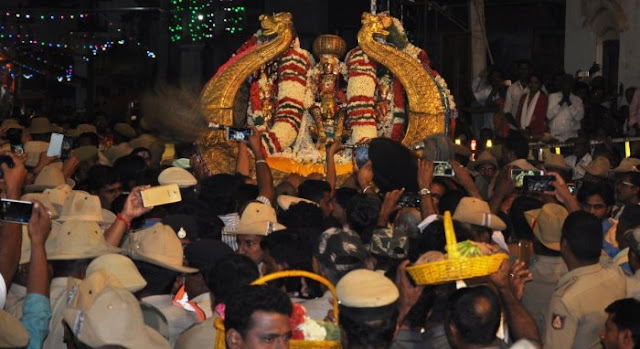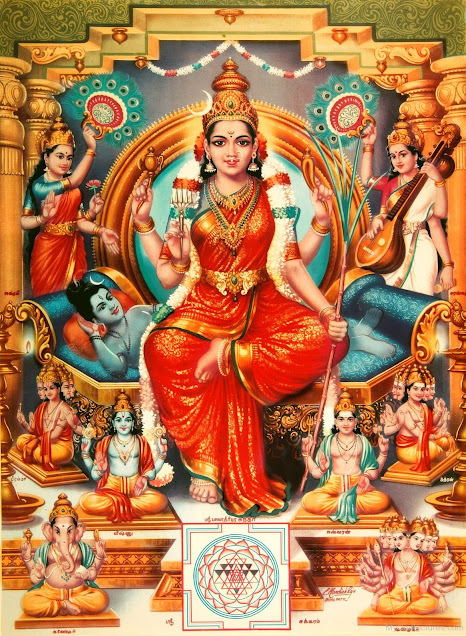By that time, Shri Raghunatha Tirtha of Uttaradi Math
had attained the lotus feet of the Lord and his successor Shri Raghuvarya Tirtha
had upon his mantle the problem of resurrecting the trouble struck Madhvas. He
was at crossroads when he contemplated the plight of the literature of Shri
Madhvacharya and his followers.
Story:
He came to the conclusion that the feet of Sri
Madhwacharya was the apt place to seek refuge and hence ardently prayed to Shri
Madhvacharya. His frequent prayers were answered and Acharya appeared in his
dream, instructing him to go to Swarnavata
where his purvashrama sister, Ganga
Bai, was living with her husband Subba Bhatta. The couple was childless and
Shri Madhvacharya ordered the saint to bless them with a child. He also assured
that the child born to them would blossom in the garden of Madhva Philosophy
and spread the fragrance to all the devout souls. After alleviating the sorrow
of the saint, Shri Madhvacharya disappeared. In the morning Shri
RaghuvaryaTirtha woke up rubbing his eyes in disbelief and tears poured from
his eyes on the kindness of Shri Madhvacharya and also the fortune of having
beheld him.
Once in the course of his tour Shri Raghuvarya Tirtha
visited Swarnavata village in the
Nizam State. The Zamindar of the village Shri Subba Bhatta and his wife Ganga
Bai invited Shri Raghuvarya Tirtha for "Bhiksha"
in their house, Shri Raguvarya Tirtha accepted to receive their Bhiksha provided
their first born male child should be handed over to the Shri Mutt. The blessed
couple accepted to do so. Accordingly His Holiness performed the pooja of Shri
Moola Rama and Seeta and received the Bhiksha
in their house and gave Phala
Mantrakshate to the couple. Sometime later, Smt. Ganga Bai, the wife of the
Zamindar conceived. Shri Swamiji was informed accordingly. He returned to the
village expecting the birth of the child. A big gold plate was sent to the
Zamindar's house from the Mutt with a direction to receive the child directly
in the golden plate without allowing the child to touch the earth. Accordingly
the child was received in the golden plate and brought to the Mutt. The
personality and the face of the child was beautiful like a moon. He was named
after Shri Ramachandra by his Holiness and brought up at the Math itself and
was fed only with the Abhishekha milk
of the Vyasa Kurma Saligram of the
Math. When Shri Ramchandra became a boy of seven years he had his Upanayanam at the Math and the very next
year he was ordained as a sanyasi and
named as Shri Raghuttama Tirtha.
Shri Raghuttama Tirthar was one of the greatest saints
of Shri Uttaradi Mutt who descended for the upliftment of the satvic souls. Shri RaghuttamaTirtha
received his advanced studies in Nyaya
Sudha and Vedantha from Adya Varadacharya
as per the direction of the guru Shri Raghuvarya Tirtha.
There was a Dalapathi in the village who patronised
the pandit so much, incapable of understanding the greatness of His Holiness
and began to respect both equally. In spite of such insults, Shri Raghuttama Tirtha very patiently, went to the house of pandit with humility to continue the
studies.
On one occasion the Dalapathi invited Shri Raghuttama Tirtha
and Adya Varadacharya for partaking food on Dwadashi day. Shri Raghuttama Tirtha
went to Dalapthi house a little late due to his pooja and Aahnika. Varadacharya and others had already commenced taking food
without waiting for the arrival of Shri Raghuttama Tirtha. The lady of the house
fell at the feet of Shri Raghuttama Tirtha and apologized. When Sri Raghuttama Tirtha
returned to Mutt he was very much sad at what has happened on that day. During
the early hours of the next day, God himself appeared in the dream in the form
of his guru Shri Raghuvarya Tirtha, and inscribed the symbolical letters on the
tongue of Shri Raghuttama Tirtha and blessed him that he would be a master of
philosophical wisdom and that he could commence teaching his disciples straight
away. Further he was directed in his dream that he should abandon his too simple
life and commence a life of pomp and status, having number of servants,
establishment, professionals, elephants etc to make the Shri Mutt strong and
powerful center of religious and philosophical learning. The next day onwards
at usual time of lectures, Shri Raghuttama Tirtha himself started to deliver
impressive lectures on ‘Nyaya Sudha’
in mellifluous voice which was sweeter than honey.
Once His Holiness was expounding "Bahulantani" portion of Nyaya sudha which is a difficult portion
and Varadacharya himself had unclear understanding of it. Varadacharya hid
himself behind a wall and listened to HH's excellent exposition which dispelled
his doubts and gave him a grasp of that portion. He lay prostrated before Shri
RaghuttamaTirthar and admitted his superiority in knowledge and paid respect to
him. The most noble swami comforted the pandit and decreed that he should have
first Tirtha in Uttaradi Math which
is being followed even now by blessing the Adya
family members with Tirtha first.
The great religious leader enjoyed the honors
befitting a prominent Math such as the throne, crown, palanquin white umbrella,
chamara, makaratorana, fan, daylight
torch, flags and musical instruments.
Once Shri Raghuttama Tirtha was passing through a
forest with his disciples. A gang of highwaymen attacked Shri Raghuttama Tirtha
and his disciples. Swami went into mediation. Suddenly, the robbers were
trapped in a conflagration and surrendered to the saint. The noble swami saved
them. Many such extraordinary miracles happened in his regime.
Shri Raghuttama Tirtha desired to enter the Brindavana at Manampundi (Thirkoilur) on
the banks of river South Pinakini (Penna) which is in Villupuram District of
present Tamilnadu. This is said to be the holy place where Shri Galava Rishi once
recided. This place is also known as "Pancha Krishnaranya Kshetra".
Shri Samiji ordered a Zamindar of Tiruvanamalai in a dream to construct his Brindavana at a specified place. Shri
Raghuttama Tirthar entered Brindavana
in 1595 AD on the day of Vaikunta Ekadashi.


